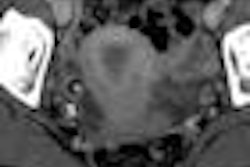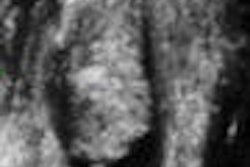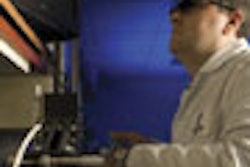B-mode ultrasound provides the highest intraobserver and interscan reproducibility for measuring carotid atherosclerosis compared with 3D ultrasound and MRI, according to recent research from the University of Western Ontario in London, Ontario. However, 3D ultrasound and MRI did yield strong results in quantifying vessel wall volume (VWV).
"Although the measurement of [intima media thickness] provided the lowest intraobserver and interscan variability, VWV measurements derived from 3DUS and MR images provided similar intraobserver and interscan reliability with the advantage that these 3-dimensional measurements also provided the increased sensitivity required for longitudinal studies of carotid atherosclerosis," wrote a research team led by Micaela Egger.
The researchers sought to compare the intraobserver and interscan variability of carotid atherosclerosis measured using B-mode ultrasound for quantifying intima media thickness (IMT), 3D ultrasound for quantifying VWV and total plaque volume (TPV), and MRI for measuring VWV. They also evaluated the association of these measurements and sample sizes required to detect specific changes in patients with moderate atherosclerosis (Journal of Ultrasound in Medicine, September 2008, Vol. 27: 9, pp. 1321-1334).
Ten volunteer patients from the Premature Atherosclerosis Clinic and Stroke Prevention Clinic at University Hospital, London Health Sciences Centre in London, Ontario, were evaluated with B-mode ultrasound, MRI, and 3D ultrasound twice within 14 ± 2 days. Single observers then performed measurements using manual (VWV and TPV) and semiautomated (IMT) segmentation.
Intraobserver coefficients of variation were 3.4% (IMT), 4.7% (3DUS VWV), 6.5% (MRI VWV), and 23.9% (3DUS TPV), according to the researchers. Interscan coefficients of variation were 8.1% (MRI VWV), 8.9% (IMT), 13.5% (3DUS VWV), and 46.6% (3DUS TPV). Scan-rescan linear regressions were significant for 3DUS TPV (R2 = 0.57), 3DUS VWV (R2 = 0.59), and IMT (R2 = 0.75) and significantly different (p < 0.05) for MRI VWV (R2 = 0.87), the authors wrote.
The researchers acknowledged several limitations of the study, including its small sample size and the limitation of the study to patients with moderate atherosclerosis and without hemodynamically severe carotid stenosis.
"In our experience, these study patients are typical (in terms of age, risk factors, and the extent of atherosclerotic disease) of those who would be included in a clinical study of atherosclerosis disease progression and treatment," the authors wrote. "Therefore, although this initial study was limited to patients with moderate atherosclerosis and without carotid stenosis, the results can be viewed as a guide for planning clinical imaging studies of carotid atherosclerosis."
By Erik L. Ridley
AuntMinnie.com staff writer
September 19, 2008
Related Reading
Real-time 3D TEE helps guide heart-repair procedures, September 4, 2008
Vascular ultrasound QA requires consistency, validation, August 4, 2008
Ultrasound quality strongly affects ovarian cancer management, January 21, 2008
Copyright © 2008 AuntMinnie.com




















